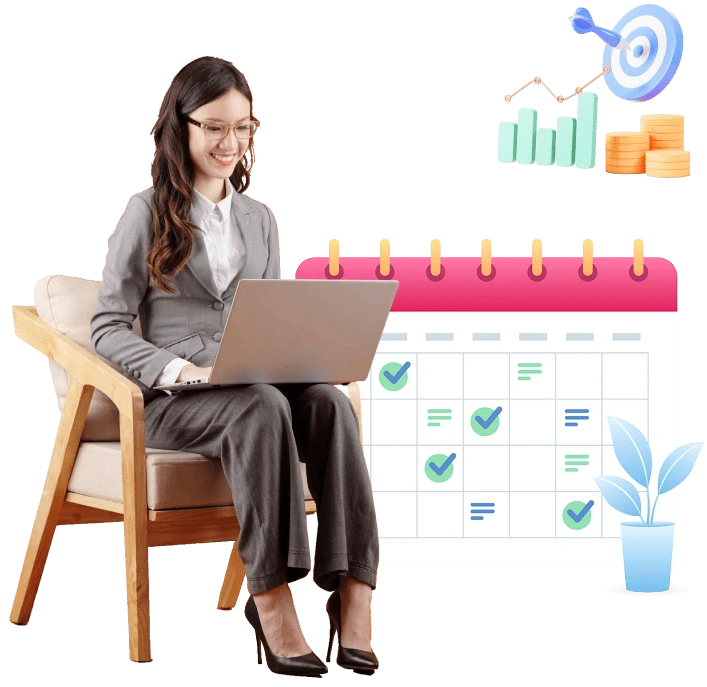The agile manifesto principles and values were developed as the software industry faced severe losses that impeded their businesses. Many projects must be stopped because of the time between the business need and the technology delivery. What creates the problem in the software development process? Because the needs of the business or customers change while delivering the product. This meant that the final product could not meet the market's demands at this time. The way software was being developed then wasn't good enough to meet demand or adapt to changing needs. But in 2000, the 17th leaders got together to discuss the problem and devise a way to avoid it. The team got together again in 2001 and wrote down the key ideas and concepts of the Agile Manifesto and the values and principles of Agile Manifesto.
In this article, we will discuss the 4 values and 12 principles of the Agile Manifesto and try to understand how they affect delivering products on time and ensuring customer satisfaction. If you want to learn more about the Agile Manifesto values and principles, the CSM and A-CSM certifications can offer many ideas about the process.
Importance of Agile Manifesto
It motivates the team to make a satisfactory offering and satisfy the customers. Let's talk quickly about how important it is:
Agile project management sets goals that everyone on the team can reach and divides the work among them.
Developers know how important it is to meet their customers' needs and plan their work around those needs.
The Agile Manifesto is essential for keeping your organization's Agile method alive.
The Four Values of The Agile Manifesto
Now, the question arises: How many values and principles does the Agile manifesto have? The Agile Manifesto has 4 values and 12 principles, which signify an agile approach to software development. The four values are:
1. Individuals and Interactions Over Processes and Tools
The first value says people are more important than things or tools. Answering the business's demands and driving its growth are important tasks that people carry out. Having the right people on the team is also essential for the success of a project. If the wrong people have the best tools, the project becomes ineffective. Proper communication helps recognize the customer’s demands, which tools cannot identify. Communication can be like a fluid that flows as needed when conversing with an individual. However, when communicating with a process, communication can be planned ahead of time and requires specific information. Also, the right contact between team members makes it easier for everyone to work together and solve the problems.
2. Working Software Over Comprehensive Documentation
In the past, most time was spent documenting how products were made and delivered. The documentation has technical specifications, needs, prospects, an interface design, and more. The long list of documentation always holds up the production process. In an Agile system, however, documentation is streamlined, saving developers' valuable time. According to the Agile documentation, software developers must have a user story to begin the job. As a result, the Agile Manifesto stresses the importance of documentation while allowing coders to focus on their primary tasks. The agile manifesto has values and principles that say the most important things are building software and getting feedback on improving future releases.
3. Customer Collaboration Over Contract Negotiation
Negotiation is when the customer and the product manager determine the shipping details. This can be done again if necessary. Collaboration is when customers thoroughly discuss the product's needs before the work begins. It means that the customer is involved in the development process. In order to meet the goals of the customer, the Agile Manifesto says that developers should involve and work with the customer throughout the development process. In the Agile Manifesto, continuous growth is essential. Thus, set up a feedback loop for your product to ensure it works properly for your customers' demands.
4. Responding to Change Over Following a Plan
In the rapidly changing world, priorities are changing more quickly. According to the Agile Manifesto, a software team must be able to change direction at any time, and their plan should be flexible enough to account for this. An Agile team can adapt to how a dynamic plan changes from one quarter to the next, or even from one month to the next. Agile brings the shortness of an iteration, and new features can be added in the next iteration. Therefore, improve the project deliverables and provide additional value. Hence, Agile Manifesto values and principles allow the team to change the process and improve their flexibility per the customer's requirements.
Read More: Features in Agile Methodology
The Twelve Principles of Agile Manifesto
The twelve principles describe the culture in which changes are accepted to satisfy customer demands. It aligns the development with the business needs. Let’s discuss the 12 principles:
1. Satisfy Customers Through Early and Ongoing Software Delivery:
The main goal of the project is to meet the needs of the customer by including their requests in the project documentation, reports, and comments. Customers are happy when they get information regularly and do not have to wait long for the final product to come out.
2. Accept Changing Requirements Throughout the Development Process:
Modification is the steady force that drives people to make positive changes. In an Agile structure, you have to be open to changes. In the past, detailed plans were made before work began, and new information learned during the growth process was not considered. But the values and principles of the Agile Manifesto prioritize changing customer needs, competitive threats, and market needs in order of importance. Using these principles keeps feature request changes simple during the development process.
3. Frequent Delivery of Working Software within Shorter Timescales:
Agile models allow product development to be broken up into smaller parts that can be delivered in a shorter time. This speeds up the process of making a product and reduces the time needed to document the product development process. This method of releasing often also gives you chances to get your team's feedback on your product ideas before each release.
4. Business stakeholders and developers work together throughout:
In an Agile setting, communication is key for team success. Thus, communication also helps with the process of making new products. A team can create a successful product when an organization's business and technical aspects work together. When the business and developers converse and work together, they build trust and openness, which makes the product creation process easier.
5. Support, Trust, and Motivate the Team Members:
An Agile framework empowers individuals and teams through trust and autonomy. Because it is a team game, the team needs to incorporate the correct people and skill set to complete the job. Additionally, each team member should know their job responsibilities before starting the project. It means sharing the user stories with the cross-functional team and the product roadmap. A motivated and satisfied team always delivers the best product.
6. Enable Face-to-Face Interactions in the Development Team:
Conversing with developers and the team regularly lets you discuss the product's needs and plans for the next steps. Daily standups, sprint planning meetings, or backlog cleaning sessions help motivate the team and move the product development process faster.
7. Working Software is the Primary Measure of Advancement:
What the Agile Manifesto says about beliefs and principles helps the team remember that people and businesses should focus more on making software. As a result, documentation is not the main goal; the main goal is software growth. This way of thinking forces the team to get the product out quickly instead of spending time on documentation. The primary objective is to give customers a product that meets their wants.
8. Agile Processes Promote Consistent Development:
The ideals of the Agile Manifesto values and principles encourage reasonable and meaningful planning expectations. This keeps morale high and ensures an acceptable balance between work and life, so people do not get burned out, and turnover decreases. Therefore, effort estimates must be made before each sprint so that coders know what they can expect from the work.
9. Concentration on Technical Excellence and Design Enhances Agility:
In an Agile setting, short and frequent releases are encouraged. The Agile Manifesto principles and values discuss the importance of keeping things clean and easy to handle. Product managers sometimes forget about the technical parts of the product, but the project needs to succeed. It is important for the team to know the product's technical responsibilities and add a few projects to the list. The developers should know when they need to accept technology debt.
10. Simplicity Maximize the Work:
The Agile framework encourages completing the task with the most impact. In a product management context, this means focusing on organizational objectives and making sharp decisions. Hence, the Agile Manifesto principles and values emphasize strategic choices.
11. Self-Organizing Teams Encourage Great Architectures, Design, and Requirements:
In the past, software development used a pyramid-shaped team structure, and management made all the critical choices. However, Agile principles stress a style of management in which decisions are made by the team rather than the leader. This style improves teamwork and includes working together on a process. The process keeps team members motivated to make decisions and share their ideas so that they can make quality products.
12. Team Reflects to Become More Effective:
In Agile, there are no set methods used for every sprint and release. This means that you are always learning and getting better, which is good for the team and the process as a whole. As a result, the values and principles in the Agile Manifesto push people to improve themselves, their methods, and their skills, all of which help with product development.
Read More: How To Build Agile Team
Final Thoughts:
Agile Manifesto principles and values emphasize understanding the customer demands and satisfying the customers by delivering the exact requirements. Development documentation is required, but it should not be the primary focus. The main aim of Agile is to create business value for customers. Therefore, the Agile team needs to recognize customer requirements and provide solutions to succeed in this process. The main ideas behind Agile development are to focus on what the business needs, deliver on time, get team members to work together, and provide high-quality services. To succeed at Agile development, you need to understand all the above concepts that make up the Agile Manifesto and put them into practice. In this regard, PMI-ACP certification can help you to implement the Agile Manifesto in your organization.






















